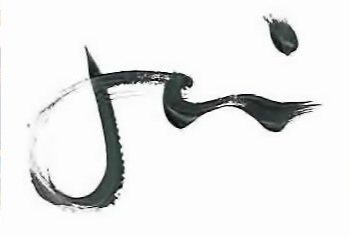Chaos and Control: The Work of Jari Chevalier
The Webster’s Dictionary defines Chaos Theory as: “the study of unpredictable and complex dynamic systems that are highly sensitive to small changes in external conditions.” These systems can include population growth in ecosystems, weather and climate, and chemical reactions. What is important to note about chaos theory is that despite the seemingly disorganized and random notion of chaos, it is still a system bound by mathematic determinism. So within chaos there exists order. This by no means conclusive foray into complex mathematics seems the perfect starting point for a discussion of the collage work of Jari Chevalier. Chevalier’s works, at first glance, bound all over the place, whereas upon closer inspection they are like puzzles, carefully knit together. With this dichotomy in mind, the collages exist as small universes, complete with their own chaos and order.
Like all complex universes Chevalier’s work takes its inspiration from a variety of sources swirling around her, including, but not limited to: science (from DNA helixes to sound waves and magnetic fields); Eastern mysticism and art; mathematics; and natural elements. Chevalier’s work also calls to mind complex art-making processes. Though she uses traditional collage methods of putting together various collected and created materials (paper, gold leaf, paint, ink, currency, etc.), Chevalier’s technique more closely resembles inlay or wood marquetry, in its careful placement of elements that fit tightly together. For example in From Here on In, the background of the work, made up of pieces of collaged and inlayed paper, looks as flat as can be while at the same time resembling gaping fissures in an earth ready to swallow us up whole. However, in the center of the piece, chaos once again gives way to control as a half sphere becomes the epitome of mathematical precision. This work resembles the earth within the cosmos, a quest for order within the unknown.
While addressing these vast cosmological notions, Chevalier becomes as much a story teller as an artist, using collage as both abstract and concrete, pointing to a connection with the universe, born out of our delicate balancing act of chaos and control. In Cocky Little Apocalypse, the landscape again opens up and buildings disappear into its depths as a burning red sun shines toxic on the horizon. Bearing witness to “the end” is a rooster. The presence of this bird, along with the title of the work, implicates humankind and its “cocky” attitude towards the planet. In this image, Chevalier warns that we are going to be swallowed up whole while a rooster mocks our past indifference with its morning wake-up call. Like Persian Miniatures or Illuminated Manuscripts, Chevalier continues a tradition of pictorial storytelling, creating fables with morals all too real for our current times.
While continuing in her storytelling mode Chevalier has also begun expanding her universe, specifically the scale of her work, which now reaches beyond the miniature to the epic. In As Above, a nine-paneled work measuring over thirteen feet high, each individual collage is a work in and of itself but the discrete panels then come together to form a united structure. The overarching pattern of the whole piece swirls with white sweeps of motion, like a galaxy or a magnified DNA helix. Just like in her previous works, the title here is essential; as it is taken from a well-known declaration from the Corpus Hermeticum of Hermes Trismegistus, the father of Western Occultism, Magic and Alchemy. The statement, which suggests a merging of micro- and macrocosm, reads: “That which is above is like that which is below, and that which is below is like that which is above.” So, as the title suggests, Chevalier’s work is as much about the wide view as it is about the detail, and the details here are what tell the complex story. As Above starts from the panoramic, including abstract cosmos and oceanic imagery and quickly zeros in on egg shapes, supernovas, DNA helixes, and, in the middle, a small fetus adrift in a sea of blackness. This work is part creation myth and part foretelling of the future, all contained in an ultimate battle between above and below, until we don’t quite know which way is up anymore.
Just as there is chaos and control there is also a sense of destruction and rebirth in Chevalier’s work. All of theses elements go hand in hand, and from this Chevalier forms a system, much like Chaos Theory, that cycles throughout both the universe and her work. And in the end Chevalier leaves us as witnesses and interpreters, staring as above and so below.
- Denise Markonish, curator
MASS MoCA, North Adams, MA
